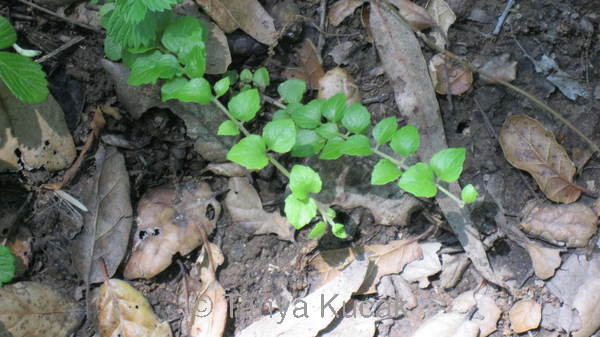
The closest thing to a no-maintenance garden I've seen is perennial low groundcovers grown in part shade.
Shade can be challenging if you're looking for showy plants in bright colors that flower year-round; however, that kind of garden needs constant maintenance. But if you want to plant tough, reliable evergreen perennials that can reduce your maintenance chores, you have several choices.

A trailing tendril of yerba buena (Clinopodium douglasii)
One area of my garden that requires no care except pulling a weed every few months started out with one yerba buena plant I carried back from a trip to Santa Barbara several years ago. Yerba buena is a noninvasive mint that hugs the ground and can be used in teas. Planted in dappled high shade, my plant has expanded to about 12 square feet, but it gets denser in shadier and moister spots and dries out where it gets too sunny or dry. I've never needed to cut it back, and unlike most mints, it does not need to be lopped when the tiny flowers appear because it does not spread seeds all over the garden.
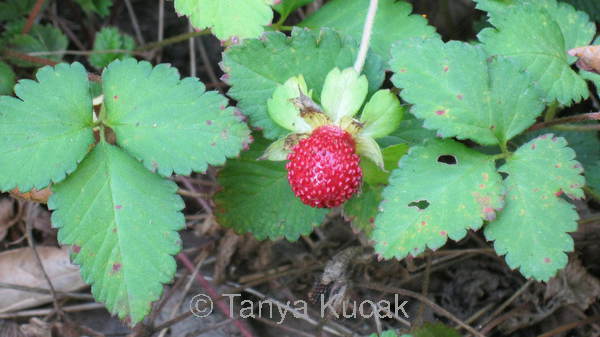
Woodland strawberry (Fragaria vesca) produces edible fruit
A year or so after I planted the yerba buena, I noticed that some woodland strawberry I was growing in nursery flats had escaped and was starting to mingle with the yerba buena. Woodland strawberry is another low-profile no-care groundcover. It's evergreen, only a few inches high, and does not get dense and matted. After a few years, with no interventions from me, the yerba buena and woodland strawberry are peacefully coexisting. They get weekly summer water because they're next to a berry patch, but the woodland strawberry is quite drought tolerant. Woodland strawberry is also a good choice where you want a well-behaved lacy plant spilling over a wall.
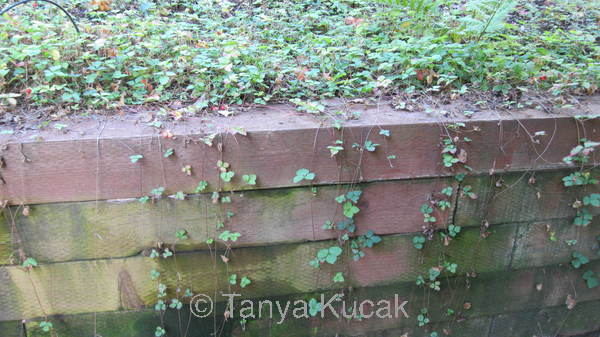
Woodland strawberry spilling over a wall
If a dense cover is what you want, try hummingbird sage. I started with one plant in a large container that spilled over and has spread to an area about 35 square feet. The foliage gets a foot high, and where it gets more sun, the flowering stems add another foot or so. It travels by underground stems but is not a thug. After a few years, I still have other plants growing through and among the hummingbird sage. Because it's a flowering plant, it looks best if the spent stems are occasionally trimmed back.
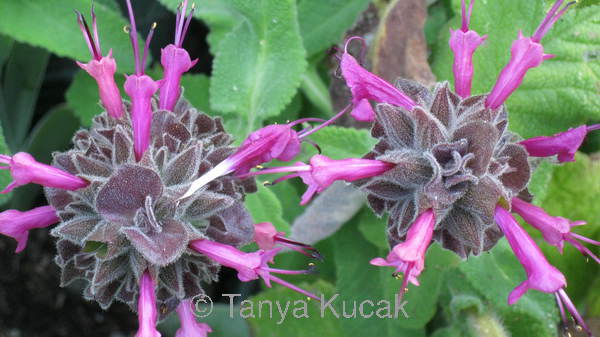
Hummingbird sage (Salvia spathacea) flowers are irresistible to hummingbirds
When it's in bloom, the hummingbirds compete with each other to drink the nectar. Hummingbird sage is a versatile plant that tolerates sun, shade, drought, and garden water. Its leaves also make a good tea.
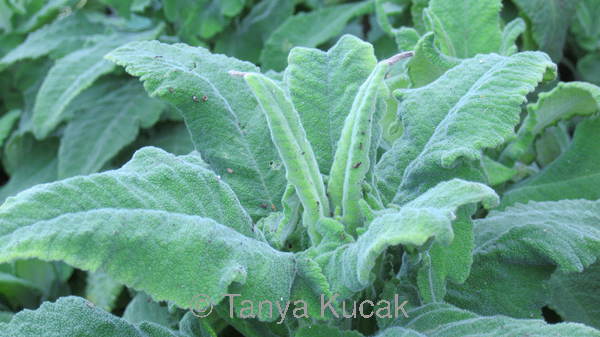
Hummingbird sage leaf rosettes form a dense groundcover
For deep shade, I've been admiring the false lily of the valley at the public native plant garden behind the Woodside Library. The deep veins in the leaves add light and texture, enlivening a shady corner. They're tall enough to swallow deciduous leaf fall, but with no summer water can go dormant until winter rains start.
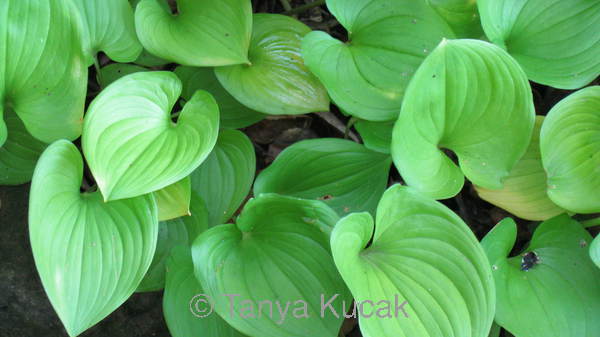
False lily of the valley (Maianthemum dilatatum) flourishes in shade
Other groundcovers for part to deep shade with occasional to regular watering include wild ginger and redwood sorrel, the classic understory plants of the redwood forest.
© 2011 Tanya Kucak